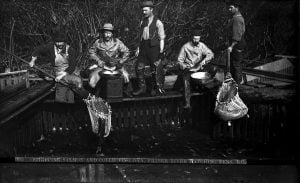Waves crash on Chesterman Beach in front of Tofino’s Wickaninnish Inn. (Photo: Marcus Paladino/Wickaninnish Inn)
The birthplace of storm watching
Tourism in Tofino and the Clayoquot Sound region has been surging since the mid 1990s, when local hotelier Charles McDiarmid built the Wickaninnish Inn on family land a few beaches north of Pacific Rim National Park Reserve. The resort established Tofino as a world-class eco-tourism destination, but McDiarmid’s decision to promote it for the winter storm-watching experience is what made the town a year-round draw.
“Storm season [November to March] really took on a life of its own,” he says. “As occupancy rates go, the winter truly carries its own.” Between 2016 and 2018, Tourism Tofino reported a 17 per cent increase in hotel bookings for the month of February alone.
More than a million tourists now come to this tiny piece of Vancouver Island coast each year, so the need for a consistent coastal safety program is hardly limited to the winter months. Whether they come for the pounding winds and storm surge, to surf Tofino’s legendary waves, stand-up paddleboard, hike seaside trails, go bear and whale watching or fishing, visitors are usually interacting with the tidal zone in one way or another.
Mercer’s experiences with storm watchers and other visitors to the beaches and oceanside trails of Pacific Rim National Park Reserve led him to confront the fact that as more and more tourists were coming to Clayoquot Sound every year (few with practical experience in ocean environments), safety measures were not developing apace.
Injuries and deaths due to surfing and swimming accidents make the news every year in Tofino. It’s believed the last time a person was fatally swept into the ocean from land was in 2008, when seven-year-old William Pilkenton, on a family holiday from Washington State, disappeared from shore while his father’s back was turned. Local beaches are wild, long and unsupervised, and sudden powerful waves and rip currents can catch recreationalists off guard.
In January 2018, Tofino was struck by one of the most powerful storms of the decade: Environment Canada clocked winds of 108 km/h and storm swells were estimated at up to nine metres. When the tempest had subsided, Mercer was relieved to discover that no accidents had been recorded — despite multiple tourists posting footage of waves crashing toward them in the “death zone” on beaches, or standing on wet, rocky outcroppings barely out of reach of storm swells.







